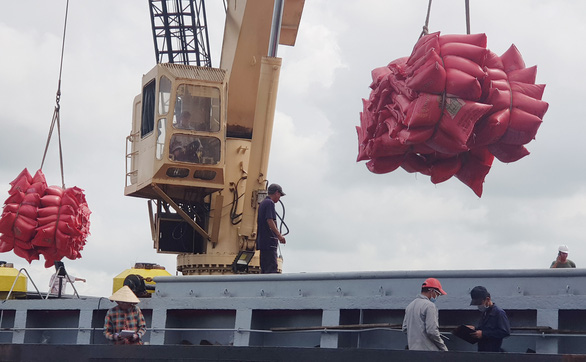The Philippines’ decision to continue imposing a tariff rate of 35 percent on rice imports until the end of next year instead of late this year is considered good news for Vietnam, which is the largest supplier of rice to the former.
The office of Philippine President Ferdinand Marcos Jr on Sunday announced that the president gave the nod to a proposal to extend the tax reduction on rice imports.
The decision was made as the Philippines is facing the highest inflation rate over the past 14 years.
Last year, the Most Favored Nation tariff rates on rice were cut to 35 percent from 40 percent for in-quota purchases and 50 percent for out-quota volumes.
The policy was initially planned to be applied for one year.
The Philippines’ deferral of the import tax reduction is expected to benefit Vietnamese rice exporters as their rice products are preferred in the Philippines.
Meanwhile, the import taxes imposed on corn and pork products will remain at 5-15 percent and 15-25 percent, respectively.
Moreover, the tariff on coal imports, a key material in electricity generation, will be kept unchanged at zero until the end of next year but it will be reviewed regularly.
Vietnam is currently the biggest supplier of rice to the Philippines. The latter imported 2.47 million tons of Vietnam’s rice worth US$1.14 billion in January-September this year.
According to the Vietnam Food Association, rice importing firms in the Philippines still prefer Vietnam’s rice although Pakistan offers lower prices.
The Philippines’ Philstar newspaper explained that Vietnam’s rice supply is stable. Vietnam’s rice products have low prices and are appropriate to the demand of consumers there.
Vietnam also has advantages in geographical location, which facilitates its delivery.
In addition, the prices of Vietnam’s rice are stable, while Thailand’s rice prices keep rising.
In particular, Thailand’s five-percent broken white rice is priced at $455 per ton, the highest in the world. Its 25-percent broken rice is sold at $439 per ton, increasing by $5 per ton.
Arsenio Balisacan, secretary of the Philippine National Economic and Development Authority, said the extension of the low rice import tariff is aimed at augmenting its domestic food supplies, diversifying sources of food staples, and tempering inflationary pressure.
Inflation in the Philippines reached eight percent last month, well above the target of 2-4 percent set by its central bank.
The central bank of the Philippines has revised up interest rates seven times this year and planned for further tightening in 2023 to bring inflation back to its target.
Like us on Facebook or follow us on Twitter to get the latest news about Vietnam!



















































